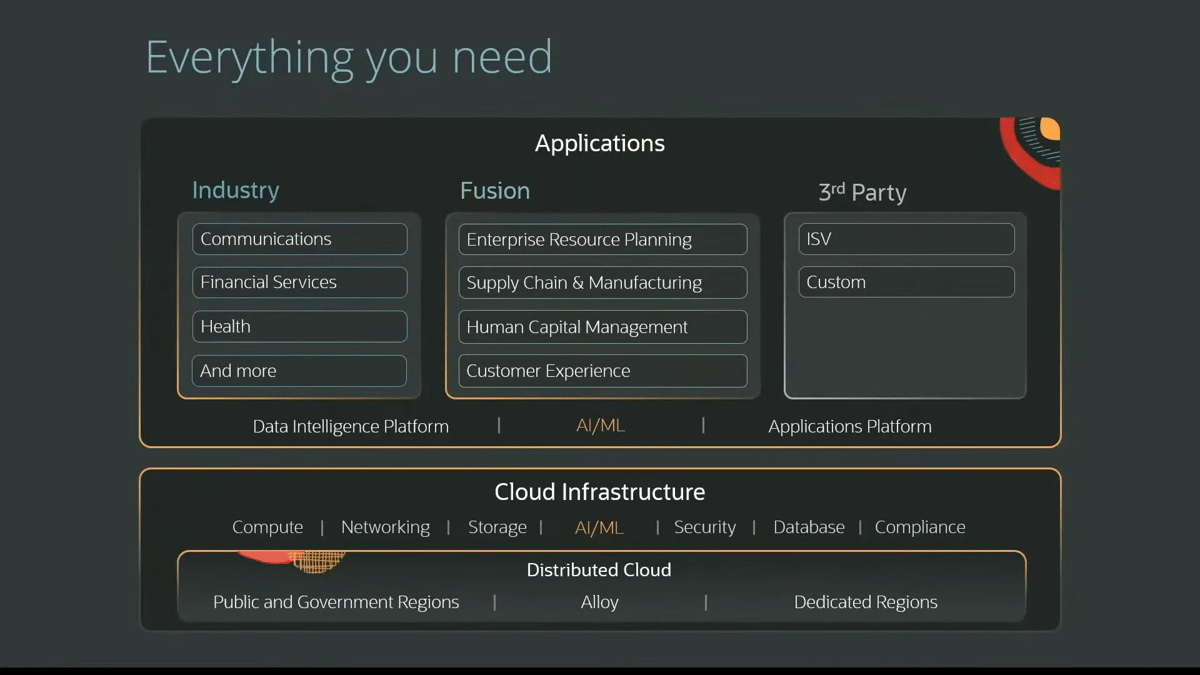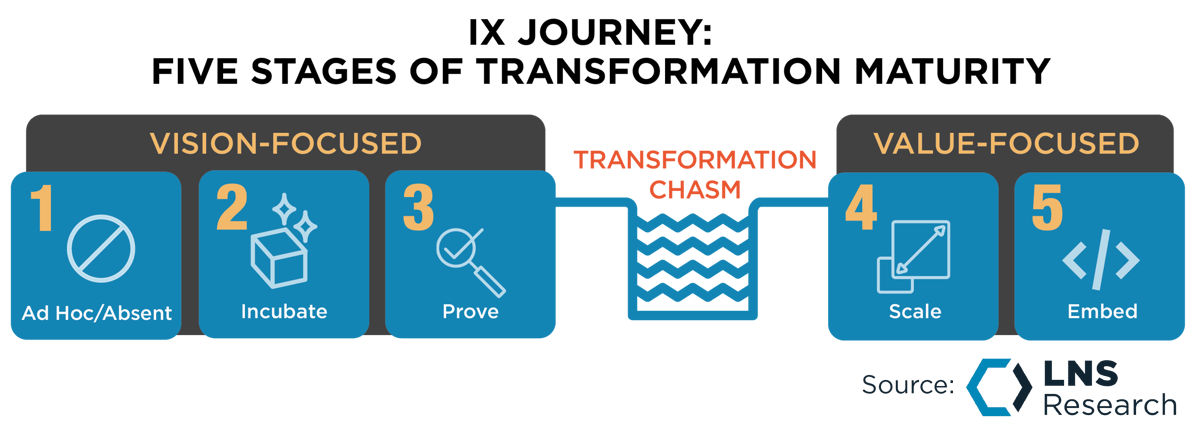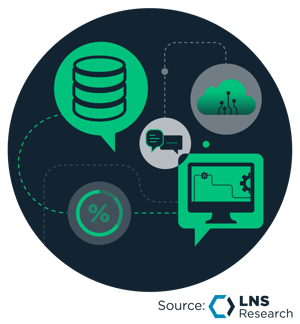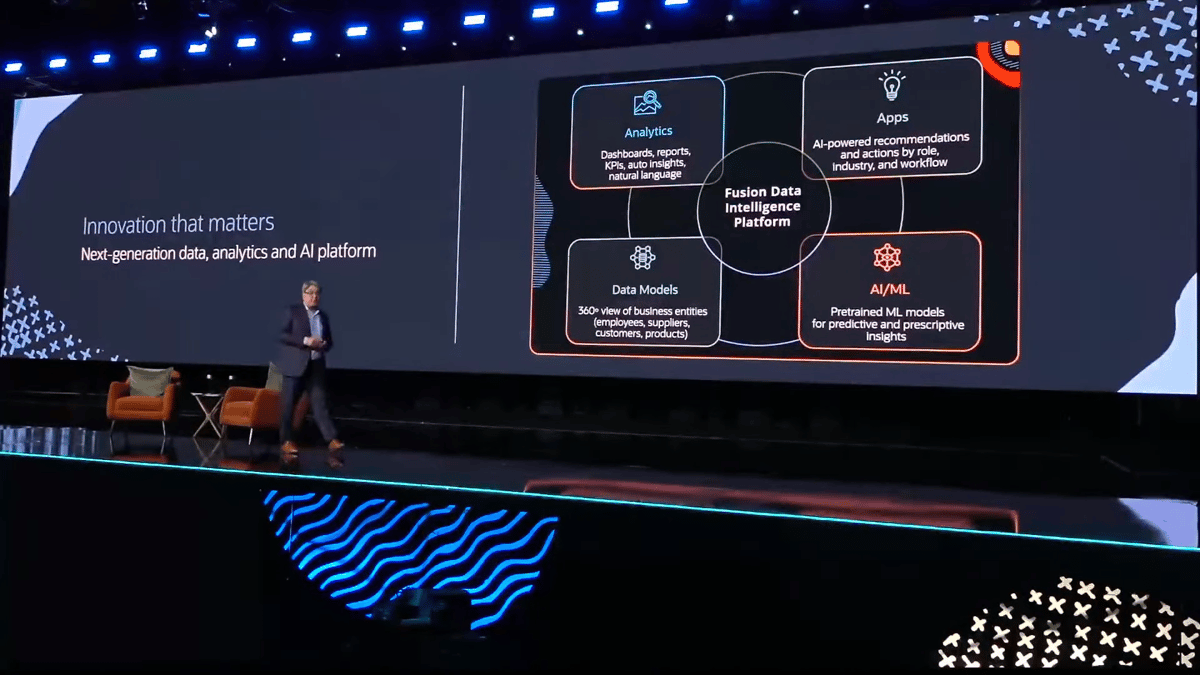Oracle Modern Business Summit: Solidly in the Cloud
This blog reviews the 2019 Oracle Modern Business Experience event in Las Vegas, Nevada. This “event season” has seen one technology vendor after...
With 20,000 attendees at the Venetian in Las Vegas, Oracle showed that the company continues to innovate and has the power to draw a crowd. While the event is named CloudWorld, there was an equal focus on applications and technology.
Oracle entered the cloud infrastructure market later than others but is eager to prove that it can surpass the established players with Oracle Cloud Infrastructure (OCI). OCI is still a smaller player than AWS, Microsoft Azure, and Google GCP, but Oracle is focusing on capabilities that can serve the industrial operations space well. The company is willing to reduce costs and coexist with the walled gardens created by the competitors. A recently announced partnership with Microsoft and a lack of excessive egress fees show they are serious about becoming a competitive cloud provider for businesses. This open approach distinctly differs from most cloud providers, where high egress fees force customers to keep their data with one provider.
With Fusion, Oracle wants to provide you with everything you need to run your business, whether it is Oracle-provided, industry-specific, or partner applications.
Oracle's cloud strategy is closely linked to its application strategy. Oracle's Fusion applications are optimized for OCI and are only available on this platform. While some businesses will happily host all their applications on OCI, most will likely combine Oracle Fusion with software from other cloud providers. A high egress fee would make such a strategy too expensive for the customers. Oracle reduces costs where they are most important for data-intensive industrial operations – data storage and egress costs. According to Oracle's documentation, storage is 3x more expensive, and egress is 10-13x more costly at the large cloud providers. This pricing can have a tangible impact on manufacturers who often store many terabytes of industrial data.
The company's strategy is not only evident in the pricing structure. CEO Safra Catz, Founder & CTO Larry Ellison, and EVP Steve Miranda delivered the same message in their keynotes; "Doing more and spending less." Oracle's strategy is not solely based on a pricing differentiation; they are also implementing more efficient modern cloud technologies, making this a lasting benefit. This is particularly important for industrial operations where the value of cloud elasticity is less than in other IT environments due to the constant workloads coming from 24/7 operations, making cost a higher priority than flexibility. Automated manufacturing operations generate significantly more data than business operations, driving the need for efficient and cost-effective infrastructure that can store and process data for an extended period.
Oracle aims to eliminate much of the technical debt that IT departments have to manage; they will ensure that you run the latest applications on the latest operating system and hardware. While this is the promise of most cloud and SaaS offerings, Oracle seems laser-focused on achieving this goal. The benefits will likely include improved security, higher performance, and faster implementation of new AI, ML, and analytics capabilities.
Unfortunately for users in the industrial operations space, most of Oracle's focus is currently on healthcare, financials, retail, and logistics. With several breakout sessions focused on industrial operations and a collection of customer speakers, it is clear that Oracle is investing in this area. Still, the company is not as far along as in other segments. The manufacturing space is more diverse and complex than other domains. Oracle is investing aggressively in Industrial Transformation, and we look forward to seeing the customer benefits in future releases. The customer speakers were still early on their journey and shared their experience rolling out core Fusion ERP functionality and business-level applications.

Steve Miranda featured Cofu CIO Craig Halterman, who shared how Cofu has used Fusion to integrate acquired companies into one company. Halterman described a process that follows LNS Research's recommendation for step changes to cross the Industrial Transformation chasm from vision to value. They made a bet on a big-bang approach that allowed them to cut loose from existing obstacles and move fast toward an integrated solution that allowed the IT department to focus on the business instead of developing applications.
The breakout sessions showed that most industrial Fusion users still use traditional (non-Fusion) ISA Level 2 and 3 applications on the plant floor. Some have integrated these applications with Fusion, and some have gone far down the path of developing their own industrial software architecture for gathering and contextualizing data.
Oracle's data-centric approach is attractive for industrial applications such as Oracle Fusion Cloud PLM, MES, inline quality, and advanced analytics, and the customers are eagerly anticipating Oracle's release of new features for these applications.
The company's acquisition of Cerner gave it a jolt to accelerate its offerings in the healthcare market. We hear interesting and promising stories about Oracle's investments in industrial operations, but we sometimes wonder if a similar jolt is needed in this industry.
 Oracle is a data-centric organization, and its history as a leading database creator is
Oracle is a data-centric organization, and its history as a leading database creator is
visible in Oracle's strategy and messaging. The presented content even tied back to Larry Ellison's inspiration from Ted Codd, who invented the relational model for database management. Until now, with a few exceptions, database developers had to choose whether they wanted data stored in rows, documents, or graphs. While it has been possible to combine these three storage models in one, doing so has always been a painful process with many compromises. In EVP Juan Loaiza's keynote, he shared how this is changing with Oracle Database release 23c, which combines all these features in one database.
Oracle is adding these capabilities using a declarative language; a developer can now describe data usage intent instead of data storage format, providing the ability to store data effectively in a normalized database and use the data effectively as JSON documents in web applications. To achieve this, Oracle is introducing a Data Intent Language (DIL) in addition to the traditional Data Manipulation Language (DML) and Data Definition Language (DDL). Oracle is adding graph and document query languages on top of the existing data, using these languages to make it easier to use and manipulate the data.
The addition of a vector data type and indexes – as well as vector search SQL operators that allow searching of unstructured data, such as images, where attributes are stored in the vector – enables the user to query for similarity in the data. We see interesting applications in time-series analysis where batches can be compared without manually describing the data's shape.
The AI Vector Search capabilities of Oracle Database 23c can also support Retrieval Augmented Generation (RAG), which helps increase the accuracy of Large Language Model (LLM) responses without exposing private data for LLM training. This new capability could be helpful for organizations that want to leverage the natural interactions enabled by LLMs in internal or customer-facing environments but are concerned about making internal data or documentation available to everyone.
While Oracle is not the first company to create a multi-modal database, they're providing thought leadership and new insight into achieving this.
Multi-modal databases are particularly valuable for industrial applications where data needs to be structured as hierarchies, transactions, and networks. Oracle and its partners are in a good position to use these new database features in their manufacturing and supply chain applications.
Most manufacturers have gone down the path of building extensive data lakes to fulfill their analytics needs. They have been using IT tools like Databricks and Snowflake and Industrial solutions like Cognite, Sight Machine, or AVEVA; Oracle is approaching the analytics problem from a different perspective. Oracle's data-centric view, where all applications are built on top of Fusion and OCI, allows users to interact with the data directly in the applications.
The data from fusion applications integrates with the data warehouse, which allows driving the actions from the data warehouse into the transactional system.
Industrial Operations can benefit from this approach by being able to analyze data in near real-time. These benefits will grow as Oracle expands its industrial operations footprint.
Attending a session without hearing the word Generative Artificial Intelligence (AI) was hard. LNS Research has recently described how Generative AI can be used in industrial operations. AI is not a new field for Oracle; the company has used AI and Machine Learning (ML) for several years in supply chain planning, document scanning, and transaction auditing applications.
Oracle announced over 50 new Generative AI features in existing Fusion modules; these will become available over the next two releases. This shows how prolific Generative AI has become and how easy it is to adopt this technology. Oracle plans to expand the use of Generative AI based on user requests.
Oracle is combining Generative AI with the new vector storage to create Retrieval Augmented Generation (RAG) and improve the results from Generative AI by adding new data sources without having to retrain the model. Oracle has partnered with Cohere to accelerate its Generative AI offering. Cohere is extending the generative models with embedding models that transform data into vectors, a key element of RAG.
As mentioned earlier, we see valuable industrial operations applications for vector data types in Oracle databases. We believe combining vector data with RAG will open new opportunities for industrial analytics and autonomous intelligent operations.
There is a lot to absorb from Oracle CloudWorld 2023; here is a summary:
Cost, openness, and functionality: While Oracle Cloud Infrastructure is one of the most open and cost-effective cloud providers, Oracle Fusion has its sweet spot when companies deploy multiple applications such as ERP and SCM. While the applications can be used individually, the benefits are greater when multiple applications share data and collaborate.
Fusion users seem to favor a big-bang implementation approach. The benefits are most apparent when everything is interconnected. While it is possible to implement Fusion Cloud incrementally, users shared the benefits of a bold approach, moving large sets of functionalities to the platform simultaneously and avoiding transient integration costs.
Oracle's data-centric approach shows great promise for industrial operations, but the applications must mature.
Oracle is a triple threat: A cloud, technology, and application company. Don't underestimate the ability to build your own operations-centric applications using Oracle APEX, a low-code application development platform.
Generative AI is everywhere – expect it to appear as a feature in every Oracle product.
As a member-level partner of LNS Research, you will receive our expert and proven Advisory Services. These exclusive benefits give your team:
Let us help you with key decisions based on our solid research methodology and vast industrial experience.
BOOK A STRATEGY CALLSiemens Acquires Camstar: Better Realizing Innovation for 3 Vertical Industries
Five Ways Industrial AI is Shaking Up Manufacturing (and Who’s Doing It)
The Definitive Guide to Manufacturing Acronyms
What Is Industrial DataOps & Why Does Every Manufacturer Need It?
Software-Defined Automation: Surprise... It's Not About Cost Savings
This blog reviews the 2019 Oracle Modern Business Experience event in Las Vegas, Nevada. This “event season” has seen one technology vendor after...
For this year’s Oracle's Modern Supply Chain Experience conference, Cloud is still core to the message, but it's not stressed. The focus was on...
LNS Research digs deeper into the Asset Performance Solution Selection Guide and takes a closer look at Oracle.
The Industrial Transformation and Operational Excellence Blog is an informal environment for our analysts to share thoughts and insights on a range of technology and business topics.